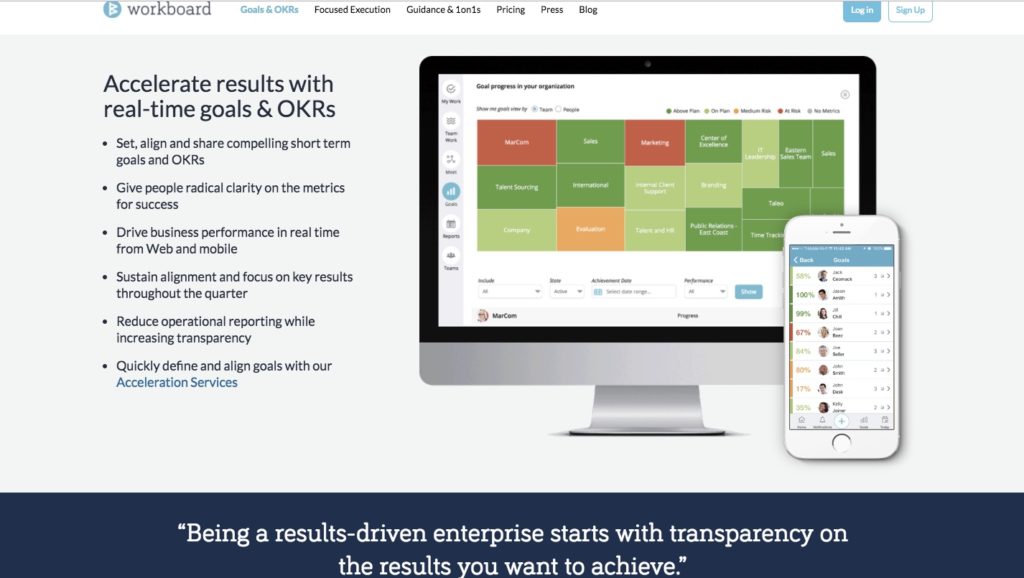Setting goals is hard. Setting goals without a product, users or metrics at hand is even harder. I have personally decided to advocate just three rules for goal setting in such companies.
The first rule of setting goals at an early stage startup is simple: Set small goals
I am not saying unambitious goals, but small goals. Small goals can be hard to achieve but they must be possible, clear and uncomplicated.
It’s critical that you set reasonable expectations for your business in order to achieve them. Especially in the early days of your company. Many entrepreneurs have visions of grandeur and set unrealistic goals based on these delusions. It’s far more satisfying consistently hitting smaller goals, than failing badly on unrealistic ones.
My advice would be to use a few quarterly goals and focus your team on no more than one to two major initiatives, four to eight smaller experiments throughout the quarter. This way, you can keep your team focused on major projects, while still allowing them to work on minor ones and use their creativity.
Who knows, startups require a lot of trial and error and one of these minor goals might become something bigger in the near future.
The second rule is kind of advice: Don’t be stubborn
Be ruthless and kick out all efforts that did not work while setting the next quarterly goals based on initiatives that did work. Set aside the time to review your teams’ goals weekly and help them where needed. Being agile and quick to response is the most important thing for an early stage startup.Keep track of your goals, change them quickly if needed and do the retrospectives often.
Still, you need to have objectives defined very clearly with the people that are going to have to deliver on those goals. Empowerment in the earliest stage of the goals definition allows your team to own the goals and to achieve them more often. Regular milestone and meeting dates to follow progress are essential in that regard.
If you don’t have the data to measure your early goals, just put your goals up on the wall and try being honest about where you are in reference to them at the moment. As soon as you think of a metric that can help you track them – set it up. Do not make up a metric just for the sake of it.
OKRs
Setting challenging and specific goals can further enhance employee engagement in attaining those goals. Google often uses “Objectives and Key Results” (OKRs) to try to set ambitious goals and track progress.
Steve Blank wrote in his article on Medium:
Use the Business Model Canvas to frame hypotheses, Customer Development to get out of the building to test hypotheses, and Agile Engineering to build the product iteratively and incrementally.
But how to you know if you are being successful? What do we consider a “validated hypothesis”? Sure, we need clear, shared success criteria for validated learning.I would add here:
…and OKR to track if you are going in the right direction.
OKRs at a glance:
- Objectives are ambitious and may feel somewhat uncomfortable
- Key results are measurable and should be easy to grade with a number (Google uses a scale of 0 – 1.0)
- OKRs are public so that everyone in the organization can see what others are working on
- The “sweet spot” for an OKR grade is 60% – 70%; if someone consistently fully attains their objectives, their OKRs aren’t ambitious enough and they need to think bigger
- Low grades should be viewed as data to help refine the next OKRs
- OKRs are not synonymous with employee evaluations
- OKRs are not a shared to-do list
In practice, using OKRs is different from other goal-setting techniques because of its aim to set very ambitious goals. When used this way, OKRs can enable teams to focus on the big bets and accomplish more than the team thought was possible, even if they don’t fully attain the stated goal. OKRs can help teams and individuals get outside of their comfort zones, prioritize work, and learn from both success and failure
This is in line with what you usually need for your startup so I recommend OKRs for early-stage startups. If you need a tool for them you can try out Workboard which is free for teams up to 10 users.

The third rule is self-explanatory for a quickly changing environment. Don’t tie goals to bonuses, or performance reviews.
In goal settings, like most things in life, rigidity is generally a bad idea. Especially if the target keeps moving and the goal setting techniques which I am advocating for are used to guide outcome-based success. Using outcomes instead of tasks as a driver, these techniques encourage accountability in every step of achieving success through metric indicators.
For an example, OKRs (when they’re done properly) is a tool for motivating and aligning people to work together. They increase transparency, accountability, and empowerment. They are not designed to be used as a weapon against your employees to keep tabs.
Linking incentives to goal-setting can lead to competition over collaboration, quantity over quality, and less innovative, challenging and success stretching goal-setting – so just don’t do it.
I hope that this will help at least some of you to set goals for your team in your idea-stage startup. I would love to hear your experiences in goal settings.



